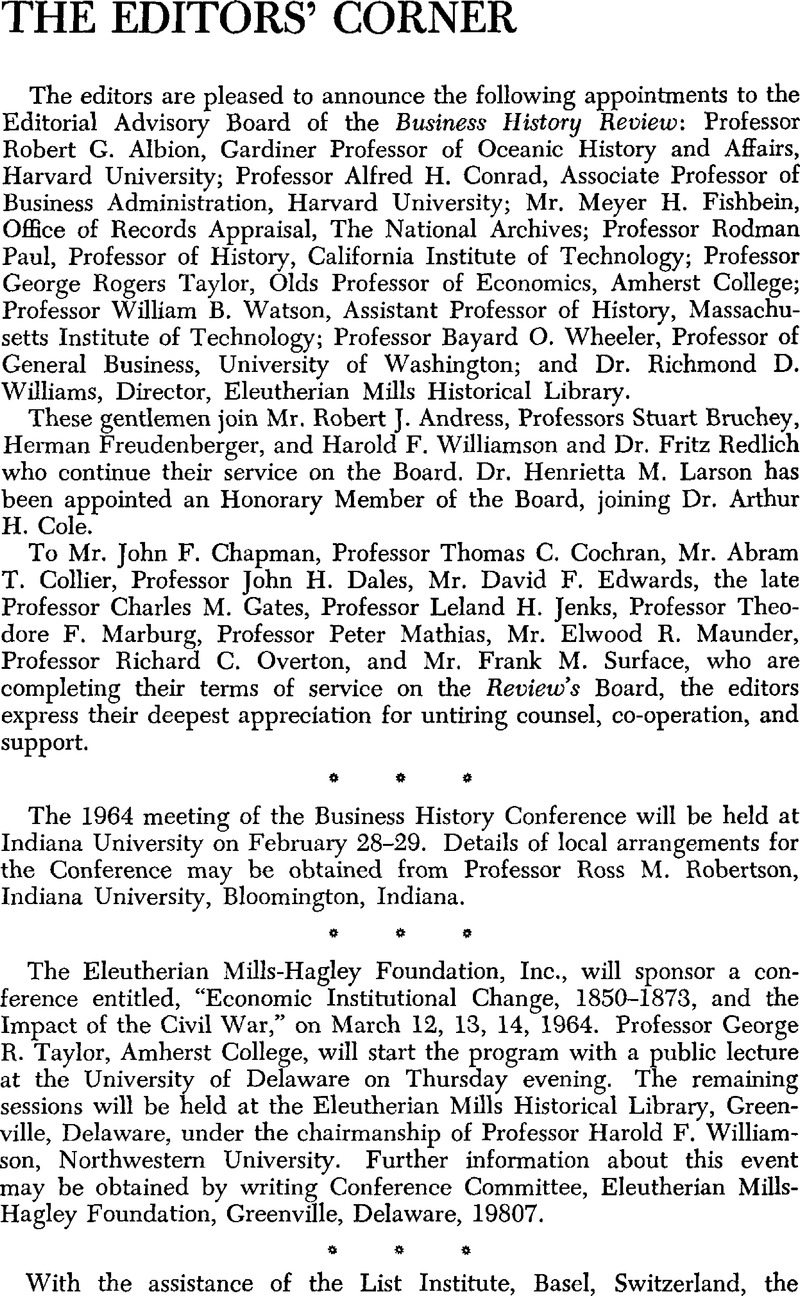No CrossRef data available.
Published online by Cambridge University Press: 24 July 2012

page 448 note 1 Barber, Bernard and Lobel, Lyle S., “Fashion in Women's Clothes and the American Social System,” Social Forces, vol. XXXI (December, 1952), p. 127Google Scholar.
page 449 note 2 Carrie Donovan, “Fashion Trends Abroad,” New York Times, August 1, 1957, p. 22.
page 449 note 3 “Dictator by Demand,” Time, vol. 69 (March 4, 1957), p. 30Google Scholar.
page 449 note 4 “The Chemise — Joke or No Joke… Is Filling Shapely Sacks of Cash for Business,” Newsweek, vol. 51 (May 5, 1958), p. 97Google Scholar.
page 449 note 5 Virginia Pope, “Dior Presents the Silhouette ‘H’,” New York Times, July 30, 1954, p. 14.
page 449 note 6 Kay Inglis-Jones, “The Fall Fashion News From Abroad,” New York Times, August 1, 1955, p. 16. See her summary column, same title, August 4, 1955, p. 14 for a lack of comment on the sack.
page 449 note 7 “First Photographs of Paris Fall Collections,” New York Times, August 29, 1956, p. 22.
page 449 note 8 “A Line on Fall: Narrow and Fur Trimmed,” New York Times, August 27, 1956, p. 22.
page 450 note 9 Carrie Donovan, “Fashion Trends Abroad,” New York Times, August 28, 1957, p. 24.
page 450 note 10 Carrie Donovan, “First Photographs of Paris Collections,” New York Times, August 27, 1957, p. 26.
page 450 note 11 Designers Say The Chemise is Taking Shape,” Business Week (February 15, 1958), pp. 38–39.
page 450 note 12 “The Flying Trapeze,” Newsweek, vol. 51 (February 10, 1958), p. 70.Google Scholar
page 450 note 13 “How Long Will the Chemise Last?” Consumer Reports, vol. 23 (August 1958), pp. 434–37.Google Scholar
page 450 note 14 Patricia Peterson, “Fashion Trends Abroad, Paris: Balenciaga, Givenchy and Desses,” New York Times, August 2, 1958, p. 9.
page 450 note 15 Carrie Donovan, “Paris: Balenciaga and Givenchy Disappoint,” New York Times, February 3, 1959, p. 34.
page 451 note 16 Carrie Donovan, “French Styles en Route,” New York Times, August 26, 1959, p. 32.
page 451 note 17 Patricia Peterson, “Report on Fashion Trends Abroad: Paris: Collections of Balenciaga and Givenchy Draw Raves,” New York Times, August 1, 1959, p. 10.
page 451 note 18 The Economic Effects of Advertising (Homewood, Ill., 1957)Google Scholar.
page 452 note 1 Appeals to individualism are hard for most of us to resist. But it does not do to forget that fashion is one form of behavior which is, almost by definition, conformist. To whatever extent the President's politics differ from mine, we wear pretty similar suits. Individuality unmistakably and necessarily resides in the areas in which fashions are originated (and these are not all in Paris, or synchronized with the current season), but it tends to be a limited or even negative thing in the areas where fashions are adopted.
page 452 note 2 See my “The Economics of Fashion Demand,” Quarterly Journal of Economics, vol. LXXV (August, 1961), esp. pp. 380–85Google Scholar and “The Styling and Transmission of Fashions Historically Considered,” Journal of Economic History, vol. XX (December, 1960), esp. pp. 584–87. Material of related interest may be found in my “Fashion Theory and Product Design,” Harvard Business Review (November–December, 1958), pp. 126–38. As will be apparent from these papers, I am far from believing that fashion leadership can be exerted arbitrarily or in a manner which is out of kilter with the needs of the time.Google Scholar
page 452 note 3 “The Economics of Fashion Demand,” p. 382.
page 453 note 4 It may be noted that the “sack” and the “chemise,” by trade definition, are not the same. The sack, like a meal sack, bulges in the middle. The chemise is a straight up and down shift. Roshco, Bernard, The Rag Race (New York, 1963)Google Scholar.
page 453 note 5 ibid., p. 148.
page 453 note 6 ibid., p. 220.
page 454 note 7 Time, vol. 83 (July 12, 1963), p. 46, citing Women's Wear DailyGoogle Scholar.
page 454 note 8 Roshco, The Rag Race, p. 207.
page 455 note 9 ibid., p. 145.